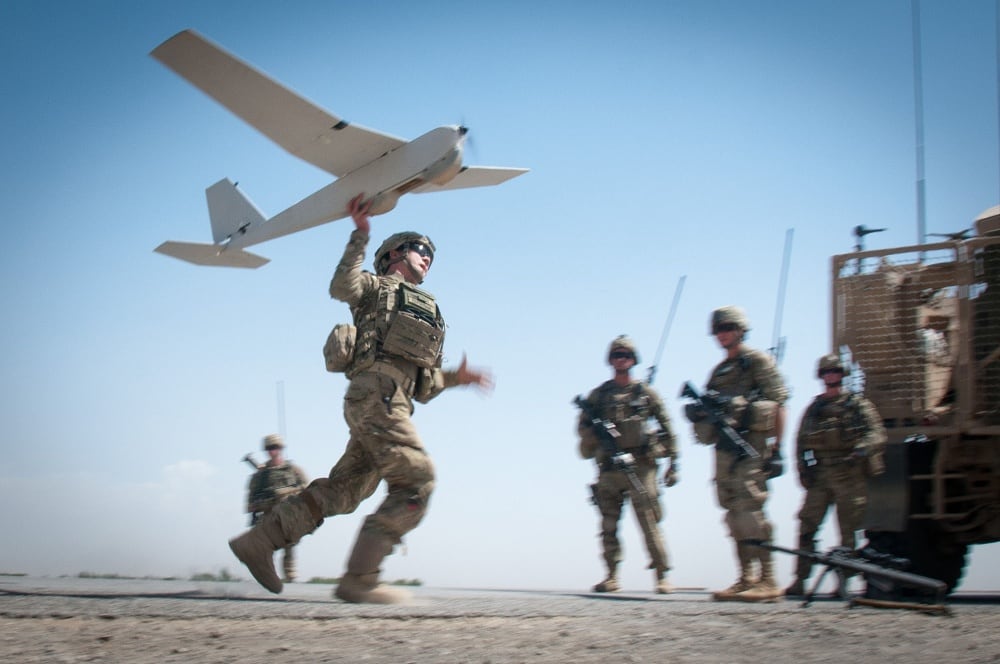The Army is one step closer to deploying drones that can change shape during flight, according to new research from the Army Research Laboratory and Texas A&M University.
The two-year study in fluid-structure interaction led to a tool to rapidly analyze a variety of structural configurations for unmanned aerial systems, also known as drones.
The tool will eventually help configure drones to change shape during flight, which will optimize performance.
“Consider an [Intelligence, Surveillance and Reconnaissance] mission where the vehicle needs to get quickly to station, or dash, and then attempt to stay on station for as long as possible, or loiter,” said Dr. Francis Phillips, an aerospace engineer at the laboratory, in an Army press release.
“During dash segments, short wings are desirable in order to go fast and be more maneuverable, but for loiter segments, long wings are desirable in order to enable low power, high endurance flight.”
Being able to design such an aircraft was previously many years down the line. But the new research developments have significantly decreased the timeline.
Phillips gave an example of a Boeing 747. When it’s on the ground the wings look straight, but once it’s in the air the wings will bend as much as a foot or more. Some flexibility is beneficial but if they bend too much, the plane loses lift and that will be detrimental to its flight.
But that Boeing 747 doesn’t have wings that are going to be changing size to be able to adapt to different needs of a mission. Its sole purpose is to carry a load of passengers from point A to point B.
The problem is when you’re designing a system that takes on many different formations, you have to figure out the best configuration for each shape — and that takes a lot of metrics and a lot of computing power.
The researchers have developed a more efficient way to compute that. Phillips said it used to take about a week to analyze each formation, and now the team can do that same work in as little as 16 hours.
Being able to run those analyses in a much shorter timeframe means researchers can continue to refine and pick a better design much quicker than if they were running one configuration per week, according to Phillips.
With this tool, they are getting datapoints for different wing lengths, masses, and structural designs and calculating how the UAS would theoretically behave in different configurations.
Moving forward, the researchers plan to continue compiling this data and see if they can begin making optimization analyses for each shape, Phillips said. Then they can move into designing aerial systems that can shift and take on various optimized formations while flying.
As for a timeline on a physical product, Phillips and his team plan to have a working prototype within three years, but they are hoping for sooner.
“This tool is what we’ve been developing,” Phillips said. “In terms of fielding something within the soldiers’ hands, that’s probably going to be much further out, just as far as the development cycle and then transitioning to an industry partner to ultimately field it.”
Researchers with the Army Research Laboratories and Texas A&M University presented their findings at the AIAA Aviation Forum and Exposition’s virtual event June 16.
Phillips published the work in a paper, “Uncoupled Method for Massively Parallelizable 3-D Fluid-Structure Interaction Analysis and Design,” co-authored by the laboratory’s Drs. Todd Henry and John Hrynuk, as well as Texas A&M University’s Trent White, William Scholten and Dr. Darren Hartl.





